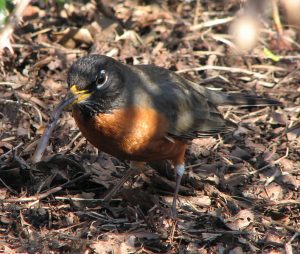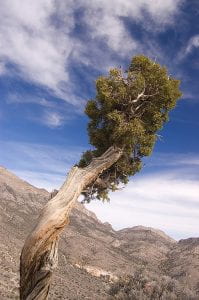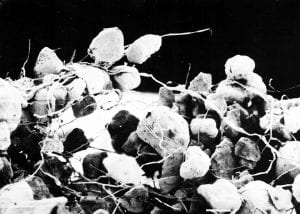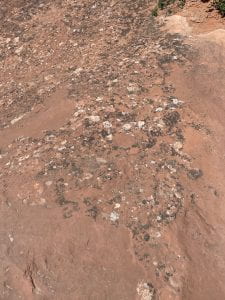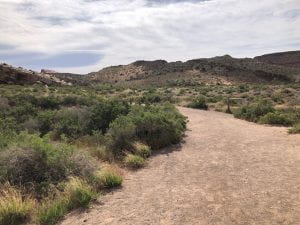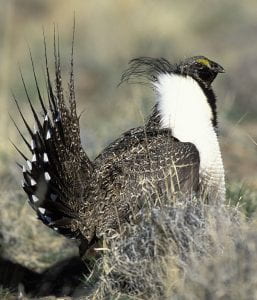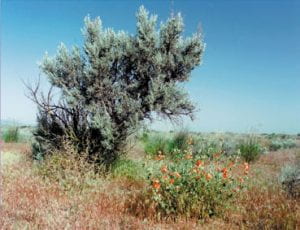(To listen to an audio version of this blog, please click on the following link …Robin Nestlings in the Yard
A few weeks ago Deborah, Ari and I were out in our backyard. I was watering the garden and Deborah and Ari were playing in the sandbox. While I was watering, two robins kept fussing at me from the top of the fence and the edge of the gutter on my bordering neighbor’s garage. Their behavior was quite strange.
Earlier, I had seen robins (possibly these two who were harassing me) diving into the very cherry tomato patch that I was currently watering. I had wondered if they were plucking off the little, ripening tomatoes? I had never seen robins eating tomatoes, but thought that it was something worth watching more closely. Could the robins have been defending a newly discovered food source?
I finished up my watering by emptying the hose on the Rocky Mountain juniper bush growing in the flower bed next to the edge of the patio. That’s when I found out why the robins were being so loud and aggressive. The spray from the hose startled two robin nestlings out from under the juniper. They ran from the water spray over into the shelter of a nearby sumac and rustled around in the weed cover peeping their heads off. The adult robins were perched nearby, giving me quite a severe talking to.
I called Ari and Deborah over to the sumac and we watched the baby robins run back and forth in the cover of the bushes and weeds. At one point one of the adult robins dropped down into the flower bed and stuffed some food (Worms? Caterpillars? I was too far away to see.) into the nestling’s mouth. The nestling then settled down to swallow and digest and was quite quiet for several minutes.
Every one of us has either found a baby bird hopping around on the ground making loud, “I-don’t-know-how-to-fly” noises, or we have received such a bird from some well-meaning relative, friend, or acquaintance. This is a situation that pits our emotional selves (“the poor little bird!”) against our scientific selves (“he’s fine, or if he isn’t, that’s fine, too!”).
The best thing for a bird lover to do when they see baby birds on the ground is to leave them alone! The parents know what they are doing and are working hard to get their progeny through their last big, developmental hurdle!
And, the experts agree with this “hands-off” approach. The United States Fish and Wildlife Service (US-FWS) has an excellent web page about what to do when you find a baby bird. They categorically state that the best thing you can do for the bird is to leave it alone. Its chances for survival are much higher if you don’t interfere with whatever is going on (and this is very important: you don’t know what’s going on when you see this little bird trundling around on the ground! Maybe there are reasons (and benefits) for his being there, maybe it’s just some random mishap. Knowing that you don’t know what is going on may be the first step toward some type of ecological, Socratic wisdom!).
Another expert on baby birds is “Sialis.” Sialis is an organization named after the genus (and also the species) of the eastern bluebird (Sialis sialis). Sialis’ website has a wonderful set of pages loaded with a great deal of practical information about bluebirds and many other small types of birds. I recommend you go there and browse around its pages. Anyway, Sialis has the same basic philosophy as the US-FWS: if you find a bird, leave it alone! Although, the site does then goes into a detailed set of possible contingencies, exceptions and scenarios.
Over the years of our Harrison Hills Park bluebird study, we regularly came across pre-fledgling bluebird nestlings running around in the vegetation under their nesting boxes. None of us ever tried to catch the baby birds and put them back in their boxes! The parents knew where they were and were feeding and caring for them as intently as they had been for the weeks the little birds had been living and growing in their nests!
First and foremost you should know that it is illegal to possess a wild bird or any other wild animal. The laws that govern this are extremely logical and are designed to let wild animals live as freely as possible away from human interference. Also, an untrained person trying to raise, say, a wild baby bird almost certainly guarantees that that baby bird is going to die.
So, what if there are dogs and cats around in the yard where the baby bird is chirping about? Best thing to do is to put the dogs and cats somewhere else and let the bird follow its destiny. If that’s not possible, gently remove the bird from the ground level (picking it up in a pillow case or t-shirt is best so that you don’t snag its toenails or feathers) and place it up somewhere out of reach of muzzles and claws (in a bush or up on a tree branch, or back in its nest if the nest is visible and accessible). Your scent will not affect the treatment of the baby bird by its parents (that’s an old Mother’s Tale designed to keep children from handling baby birds). You might even make an artificial nest or protective enclosure for the bird to help to keep it safe (check out the Sialis description of these kinds of nests and enclosures!). If none of these options are possible, then you might have a reason to take the bird out of its yard. This removal should only be done with great caution and reluctance, though. The baby bird’s parents are probably lurking nearby with beaks full of mushed crickets and caterpillars. The web sites say you watch the bird for at least two hours before presuming that it is abandoned.
Why would the baby bird be on the ground in the first place? Maybe the nest got too crowded, and the bird and possibly several or all of its clutch-mates had to abandon their cozy egg-home. Getting out of the nest, in fact, may help to reduce predation on the nestlings! Nest predators (like possums, raccoons, hawks, jays, crows, and maybe even snakes) eventually will cue in on the constant in’s and out’s of the parental birds carrying their phenomenal load of nestling food into the nest. Getting out of the nest as early as possible might just be a very solid survival strategy! Also, many bird species have several days of almost-flying fledging in which the nestlings exercise their growing wings to get to the point of being able to fly. These grounded fledges make up a significant proportion of the “saved” baby birds, but they really don’t need to be saved: their moms and dads are close by and are both watching and feeding them continuously.
Now, that baby bird might be on the ground by accident and for no good reason or for any benefit to themselves is also a possibility. Maybe their nest fell apart, maybe there was a wind storm, maybe the branch the nest was placed was rotten. Equally possible, though, is that the parental birds screwed up. They didn’t display the optimal behaviors in nest site selection or building or in their nestling rearing practices. If so, Natural Selection might be best served if those parental genes were not continued in the population. Richard Dawkins might have been thinking about baby birds out of their nests when he said: Nature is not cruel or kind, it is just indifferent to suffering.
The next day I saw one of the baby robins up in the branches of a small, blue spruce tree growing just inside my north-side fence. One the parent robins was flying in and out of the spruce, probably delivering food. I am sure that the other baby robin was still out in the backyard, too.
When Ari went home the evening after we first found the baby robins, he talked and talked about the baby birds and their parents. He has since made up a new imagination game in which he is a baby pterodactyl and we are his parents (and grandparents) bringing him food. Good fusion of modern and paleo-ecology!





